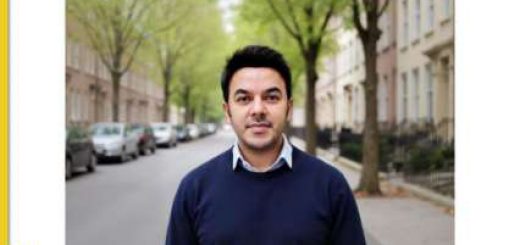Shadow & Light
Nikos Andritsakis with director Dibakar Banerjee. (Source: Partha Paul)
By: Express Features Service
Noir is a misunderstood word, believes Nikos Andritsakis. “The word means ‘black’ in French and people often mistake black-and-white films for ‘noir’,” he says. That is the reason why a number of black-and-white films belong to the genre.
Noir films are usually ones with a pessimistic notion about the world and mostly end in tragedy, he explains. A genre that thrived during and after World War II. “These would often be detective stories, where the protagonist would begin by solving a problem, in the process realise he is part of the problem and then be made to face his worst fears. Roman Polanski’s Chinatown would be an example,” says Andritsakis.
The Greek cinematographer has recently wrapped up post-production on Dibakar Banerjee–directed Detective Byomkesh Bakshy! a film set in Calcutta of the ’40s. It gave the 38-year-old an opportunity to explore the detective noir genre that he grew up watching.
Related
In Detective Byomkesh Bakshy!, Banerjee wanted to recreate the era without giving the film a “period look”. “The common tropes include giving the film a sepia tone, but we wanted the audience to ‘time travel’, as if we carried our modern equipment and captured the goings-on of that bygone era,” says Andritsakis. He has collaborated with Banerjee on Love Sex Aur Dhokha, Shanghai and Bombay Talkies.
Andritsakis applied the old techniques of hard and directional lighting to project shadows, and the camera angles are a mix of contemporary and classic, giving the film a retro feel. For instance, he has used the classic method of lighting the film’s leading lady.
Citing the example of close-ups of Ingrid Bergman, the cinematographer says that back then, in most black-and-white films the continuity in cinematography would be lost when the scene would move from a wide-angle shot to a close-up. “Suddenly, the hard lighting would give way and the leading lady would appear in soft light, with a halo-like aura around her, softening her face. That’s because they didn’t have the technique for soft lighting,” says Andritsakis. In the film, he used a similar technique by covering the light with a stocking.
However, the key role of cinematography in a detective noir film is to add suspense. This is where the play of shadow and light comes in. In a scene where Byomkesh Bakshy and his assistant Ajit are seen breaking into an office, the camera captures them from the floor and the top level. The corridor outside is dimly lit and the only source of light is from the elevator, with the shadow of its grille, as it is opened and closed, adding drama to the moment.
The old-world charm, Victorian structures and narrow bylanes of present-day Kolkata aided the visual appeal of the film. Shooting in old bungalows or houses, the wooden lattice windows and doors would aid the cinematographer’s vision as the shadow would shield the protagonist’s face, creating the desired effect. However, this also meant extensive pre-planning at the recce stage. Andritsakis carefully chose locations along with Banerjee, based on the direction of natural light as well as the external lighting.
Andritsakis, who worked in London for eight years after he moved out of Greece at the age 24, shuttles between the UK and India. “People here are warm and life is thrown out of schedule because of traffic and things involving day-to-day life. But there’s so much to absorb, take in that I never tire of it,” he says.
Source:: Indian Express







